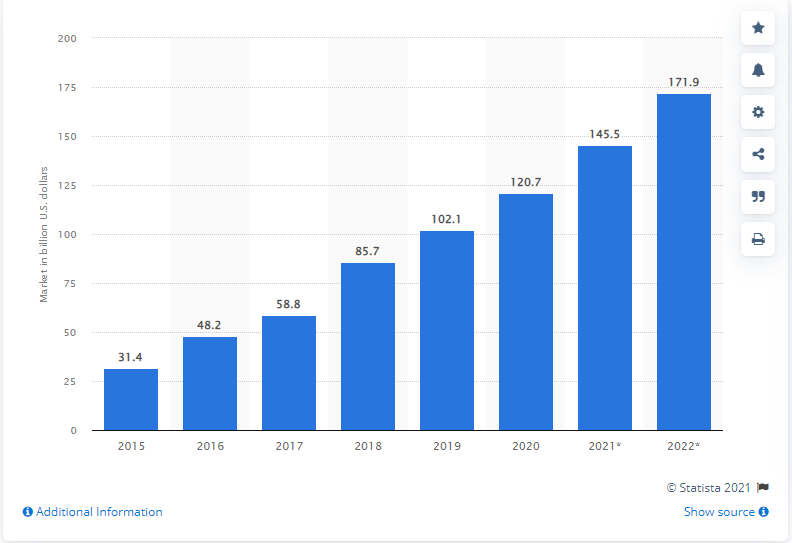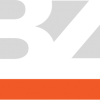In the world of sales, software as a service is a relatively new product offering. Sales Force was arguably the first to breakthrough in this domain, followed by Concur, who set the record for the largest ever SaaS acquisition in 2014, a whopping $8.3 billion.
SaaS didn’t move into the mainstream, however, until cloud computing became more affordable, robust, and secure. Then a global pandemic accelerated its growth as companies worldwide raced to complete their so-called “digital transformation.” It now produces $172 billion in sales annually.
Still, SaaS is in its adolescence, with all the awkwardness adolescence brings. This article is a humble (or, perhaps at times, not so humble) attempt to bring it more into adulthood.
1. Know the Business Problem You Solve
I see statements like this all over the websites of SaaS companies:
- We’re the unrivaled market leader
- We’re disrupting the industry with best-in-class technology
- We’re the Google of (fill in the blank)
Honestly … who cares? Not your prospects!
Your prospects have real business challenges, and your chest thumping bravado leaves those challenges unchanged. Yeah, I get it, your technology is great. But that’s table stakes. Everyone’s technology is great. Your focus should be on (again) the business problems it solves.
This requires a critical shift in thinking. You are not the hero of the story. Your prospect is the hero, and you are the trusted advisor that helps them complete their quest. Think Merlin to King Arthur or Dumbledore to Harry Potter.
State clearly and precisely how you help your prospects overcome the challenges that keep them from completing their quest for a thriving enterprise and how much better their world will be when they do. This becomes the business case for investing in your SaaS software.
2. Monetize the Cost of the Business Problem You Solve
Knowing the business problem you solve is only the first step in successful SaaS sales. You must also be able to define exactly how much that problem is costing your prospects. This takes getting to know your prospects’ business and having insight into how your software improves their condition in very specific terms.
In other words, if real money is not being saved, then the price of any product—no matter how cool—is too much.
It’s extremely important to emphasize these costs as early as possible in the sales process. This is what creates urgency in sales and answers these two questions: Why change? Why now?
An astounding 63% of qualified SaaS leads result in no decision. Not cold calls but qualified sales! This makes creating urgency around the cost of doing nothing incredibly important and having a snazzy new software isn’t enough. That software must save them money. Lots of it.
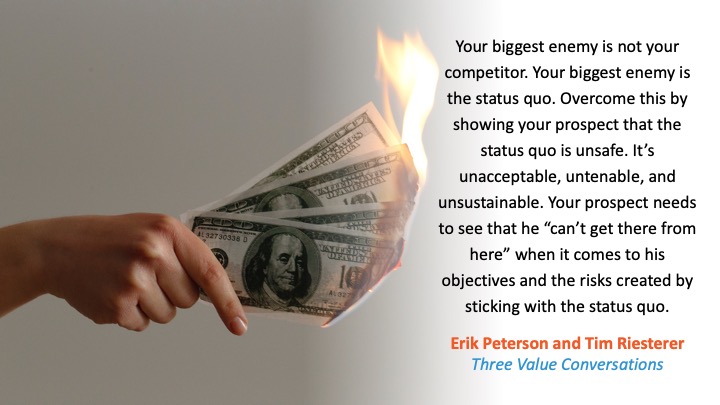
This approach is also aligned with how human nature works as it relates to the psychology of loss aversion. Our first priority as human beings is to eliminate pain, then enjoy pleasure. Monetize costs first and then explore return on investment.
Download This Article as an eBook
3. Win Executive Sponsorship
Here’s another reason to monetize the cost of the business problem you solve. It’s what executive buyers care about. VPs, GMs, and senior leaders in the C-suite are all thinking about solving these problems morning, noon, and night. Most assuredly, they’re not thinking about the latest whiz-bang software.
Most SaaS sellers, however, talk with IT professionals and not business executives. And IT professionals, being technology nerds themselves, just love your software, and you conclude (mistakenly) that things are looking up for a big deal and a big commission.
Then you crash into the real buyer, and everything comes to a screeching halt.
For success in SaaS sales, you’ve got to flip the script. Start with winning executive sponsorship. That means calling on VPs, GMs, and the C-suite, building a business case for your solution. If you can’t get access to these leaders, use your IT contacts to gain access and help them see how it’s in their best interest to do so.
Apart from executive sponsorship, you’re spending time talking with people who have no ability approve a deal, hoping against hope that it will somehow close. That’s a lot like gambling in Vegas!
4. Don’t Rush into a Demo
SaaS companies love their technology and can’t wait to show it off. Typically in a SaaS sale, the demo occurs early, followed shortly by proof of concept. Don’t do it!
Demos should be used to close deals and not open them. That goes for proofs of concept as well.
Why?
Without adequate business information, your demo is an expensive fishing expedition, wasting your time and the resources of the sales organization on something you’re not even sure meets the needs of the buyer. And, in some cases, you’re not even sure who the real buyer is. Again, a waste of time and resources.
Use the demo as a carrot to motivate your prospects to help you build the business case needed to fully customize it for them. Then crush it and close the deal.
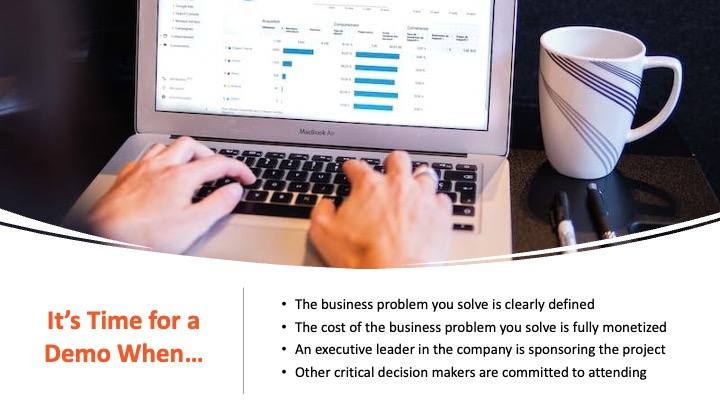
In other words, never do a cold demo. Your snazzy technology is not enough to secure a significant business investment and will just inoculate potential buyers from the real solution.
5. Work Backwards from a Mutual “Go Live” Date
Any sale, from buying a car to buying an enterprise software solution, has a sequence of events. Gaining agreement on that sequence is critical for success. This is often referred to as creating a mutual action plan, a MAP that holds both parties accountable for doing what they agree to and when.
SaaS sales has these same dynamics, but its disruptive nature can render most mutual action plans useless. Here’s a better approach: setting a go live date.
When you set a go live date, you focus on the vision of software deployment and not the challenges that will (inevitably) arise along the way. When a go live date is set, you work backwards from that date and determine a more realistic sequence of events. A go live date that both of you agree on also brings the clarity needed that includes legal, IT, HR, and other players that may otherwise be overlooked.
Finally, and this is a useful technique at times, float a go live date that appears super aggressive. Sometimes you’ll get agreement, and all the resources of the company will be devoted to meeting it. At the very least you end up with a less aggressive time frame, still a good thing.
6. Masterfully Manage the Buyer Matrix
One of the things that makes SaaS sales so incredibly unique (and challenging) is the cast of characters it takes to close a deal. There’s the needs of end users and the needs of IT professionals who ensure technology integration. There’s the implementation contracts legal must approve and HR compliance mandates. Then, of course, there‘s C-suite agreement, never guaranteed as CEOs and CFOs almost always have conflicting priorities.
It’s amazing that any SaaS sale actually gets done!
A savvy sales rep in this complex matrix of buyers and decision-makers is therapist, priest, and matchmaker all at the same time. Successful sales professionals in this context are incredibly skilled at building diverse relationships and facilitating difficult conversations that move to a defined outcome: a closed deal.
The graphic below page visualizes the way all this can look.

Notice how the dynamic of these relationships involves aligning leaders from other parts of your business to their counterpart in a customer’s business. Managing this alignment is a superpower all SaaS sellers need to possess to be successful.
7. Run Sales Meetings Like Business Meetings
The very best salespeople don’t view themselves as salespeople at all but businesspeople, trusted advisors to their customers and prospects. As a result, they conduct their meetings like business meetings and not sales meetings.
The way you achieve this is mastering the practice of up-front contracting.
The term “up-front contract” was coined by Sandler Systems, and it’s a sound sales concept. Up-front contracting means gaining agreement from prospects and customers at the beginning of every meeting through a series of statements and confirming questions, moving a deal forward instead of having it disappear down a black hole.
Conversely, it never involves “checking in to see how things are going,” but always having a reason for requesting a busy manager’s precious time and an agenda for that meeting that makes sense. In short, acting like a businessperson and not a salesperson.
Here are five areas to gain agreement around for every sales meeting: the meeting time, the context, the agenda, the next step, and the next meeting. Talk tracks for each are on the following page.
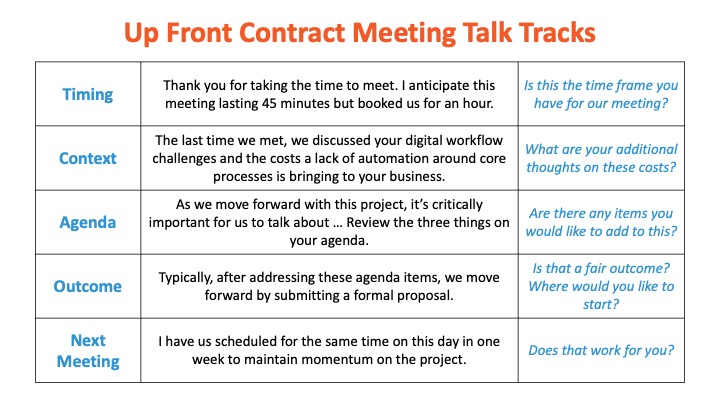
Working is SaaS sales can be one of the most enriching careers on the face of the earth, both personally and professionally. The rewards for success are very real and can be very lucrative.
Having the latest cool software, however, is not enough. It’s a start, but selling that software requires meeting the real business needs of your prospects and customers and acting like a real businessperson, a trusted advisor, every step along the way.
The SaaS clients I work with typically experience 20% growth in annual recurring revenue year after year following these sales secrets. I’m convinced you can too if you implement them fully in your sales process.
